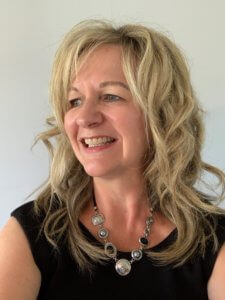GLOBAL PERSPECTIVES, PERSONAL EXPERIENCES
BY LAURA KING
It’s always remarkable when like-minded people gather to problem-solve: issues that defy resolution by individuals are dissected into actionable segments; challenges that seem insurmountable become manageable; momentum builds; ideas become frameworks; and solutions become achievable. This was the case in Porto, Portugal, in May, during the 8th International Wildland Fire Conference, which culminated with support for the Landscape Fire Governance Framework – Guiding Principles for Adjusting Strategies, Policies, and Management to Global Change. For three days, more than 1,300 participants from 90 countries listened, learned, debated, brainstormed and, ultimately, endorsed the document.
Conference chair Tiago Oliveria outlines the anticipated next steps and impact of the framework and the conference itself in our cover story (page 12) and provides insight and analysis.
The Porto conference was also the venue for the presentation of the 2022 IAWF awards (page 8), with most recipients in attendance. IAWF was thrilled to bestow awards in person to wildland fire trailblazers David Calkin, José Antonio Vega, Jan Kaczmarowski, and Fábio da Silva.
Conference attendance from 90 countries is indicative of the global nature of the wildland fire challenge and the magnitude of climate change. IAWF strives to provide a worldwide perspective; our stories from the United States (Robertson Draw, page 18, and Drivers of California’s changing wildfires, page 36), Australia (Fired up, page 22) Canada (Indigenous impacts and solutions, page 26), and Brazil (page 30), are testimony to our commitment to cover the globe.
Also in this issue we’ve ensured topic diversity: health and wellness; prescribed fire; policy; research; technology; opinion; leadership; and personal perspectives.
It’s fascinating to read Jon Trapp’s story about the Robertson Draw fire on June 15, 2021, in Montana. The details make a great story – sipping hot morning coffee, listening to the sound of the waves – and then Trapp’s
realization that his hometown was potentially in danger, and he was on vacation in Oregon.
Equally gripping are our pieces on technology: Australian fire simulation expert Rohan Fisher thinks of his computer programs as video games for fire managers, and the Internet of Things (page 40) makes an appearance in the forest to monitor temperature, humidity, soil, moisture, and air quality along with problems such as drought, pests, or diseases – and, of course, wildland fire detection.
Freelance writer Eugene Gerdon provides perspective on Brazil, where the previous government had a suppression mindset while the current regime is more in tune with global wildland fire policies.
“The new government will start more active controlled and prescribed burning,” Gerden writes. “Some regions of the Cerrado, a vast ecoregion of tropical savanna in eastern Brazil (the most biodiverse savannah in the world, which is known for Brazilian highlands) – and the Planalto have been using prescribed burning since December 2022 to reduce fuel accumulation.”
Our two regular contributors, Bequi Livingston and Mike DeGrosky, share their usual enlightened views on mental health (page 24) and leadership (page 44).
Livingston’s personal and professional knowledge of trauma and its impact on wildland firefighters and managers is remarkable; her willingness to be vulnerable and share her story and her path to peace is selfless. Understanding trauma, and writing about it through a firefighter lens, is invaluable. DeGrosky has been a consistent voice in Wildfire for years and is truly a guiding light for crew bosses, land managers, and those who lead organizations and agencies. DeGrosky’s take on the relationship between an organization’s culture and its strategy, and the importance of aligning the two, highlights the IAWF’s diversity and inclusion initiative as an example of a successful cultural / strategic bond.
As we were putting together this issue, wildland fires burned in North America and Europe; some areas reported the worst seasons on record. We’ll explore those situations in the next issue.

